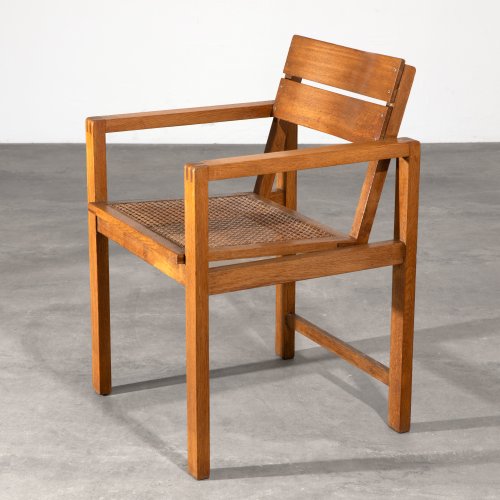Biography
Even if he does not seem to have been one of the most famous designers of the Bauhaus, Erich Dieckmann's designs still are certainly among the most important of the 1920s/30s. They are no-nonsense, functional, confident and of timeless elegance. He would create something new with any material he came upon, whether it be wood, cane or tubular steel.
As early as 1928, Marcel Breuer talked about Dieckmann's furniture: "They are rather light, open, as if sketched into the room; they do not hinder either movement or the view across the room." (Quote: Vegesack (ed.), Exh. Erich Dieckmann Möbelbau 1921-1933, Weil/Rhine 1990, p. 74, after original source: Breuer, Metallmöbel und die Moderne Räumlichkeit, in: Das Neue Frankfurt, 1928, No. 1. p.11.)).
Dieckmann left his parents' house at the age of 16 to join the navy; at 17, he volunteered for military service. Having been wounded, he decided to go back and finish school and then study architecture and art. In 1921, he enrolled at the Bauhaus in Weimar and began his apprenticeship in carpentry, which he completed in 1924 with the journeyman's examination. He did not relocate with the Bauhaus to Dessau; instead, he stayed in Weimar (1925-1930) where he took over the management of the carpentry workshop at the state-run Bauhochschule. In 1931, due to his Bauhaus past and under pressure for it from the National Socialist cultural policy, he transferred to the Burg Giebichenstein School of Applied Arts as a master craftsman. Here, too, he was ejected by the National Socialists in 1933. He designed furniture for companies such as Cebaso, Thonet, DUSCO AG and private clients; some of his tubular steel models were also produced under licence from 1934 onwards by Metz & Co. in Amsterdam.

